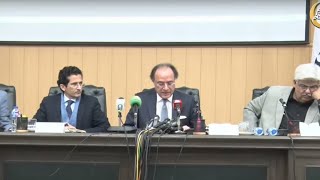With correlations between interest rates and currencies approaching their lowest levels in more than a decade, investors are pondering whether the traditionally dominant driver for foreign exchange markets remains relevant. In usual times, currencies can rise and fall according to the differences in interest rates between economies.
A widening gap in rate levels would usually spur investors to borrow in the lower-yielding market and invest in higher-yielding markets where they expect to earn more for their money, so long as volatility stays low. But since the third quarter of 2017 and particularly in the opening weeks of the year, that correlation has broken down sharply between the dollar and some of its major rivals, notably the euro. That signals other forces are dominant.
Ninety-day correlations between the difference in 2-year US and German interest rates and the euro/dollar rate are near their weakest levels since late 2005, according to one widely-used measure. Kamakshya Trivedi, co-head of global foreign exchange strategy at Goldman Sachs in London, points out that such a breakdown in correlation is by itself not very unusual, especially as it follows a highly correlated period between 2010 and 2014.
"Sometimes, other factors are in play apart from fixed income flows such as unhedged equity flows, reserve diversification and strong growth in the rest of the world, as we are seeing now," he said. Indeed, the global economy is growing at its strongest pace in years. BlackRock strategists expect expansion in the United States to last another couple of years at least given the additional fiscal stimulus provided by recent tax cuts.
But despite a rebound in global growth, financial conditions across the world remain extraordinarily loose thanks to low borrowing costs, which have helped to fuel a soaring stock market. That has come as the US Federal Reserve has raised rates - three times last year - and financial markets expect nearly three more rate hikes this year. But the dollar's decline - 15 percent since the start of 2017 - suggests investors do not believe that interest rates have reached a level where they make US assets attractive based on relative interest rates.
Interest rates in the euro zone were last raised in 2011 and many analysts are not expecting a rate hike until at least next year. The dollar, the world's global funding currency, remaining weak or weakening further is a positive for financial conditions and will keep risk appetite supported, analysts at Morgan Stanley said.
The struggling dollar has also prompted global central banks and sovereign wealth funds to begin slowly diversifying their foreign exchange reserves away from the US currency, a move that may gather pace as their overall holdings climb.
BR100
11,987
Increased By
93.1 (0.78%)
BR30
37,178
Increased By
323.2 (0.88%)
KSE100
111,351
Increased By
927.9 (0.84%)
KSE30
35,039
Increased By
261 (0.75%)






















Comments
Comments are closed.